
NECK LIPOMAS AT THE BACK
The posterior neck has its peculiarities and characteristics that can make surgical removal of lipomas very difficult. I remember highly complex and complicated surgeries that a layperson would never expect (unfortunately, not even the private health insurance with its cost-oriented "trivialization drive"):
Typically, neck lipomas have to be operated on in a prone position, in the so-called "jackknife position," with the head bent forward, to better access the neck area. The space here is very tight intraoperatively. Sterile optimal coverage must also be applied, unfortunately, with a sterile cloth covering the head area, and the patients look and breathe freely downwards, towards the floor. Technically, there is no other way.
The posterior neck is a mechanically highly stressed region. Therefore, there are particularly hard, tough tissue structures that provide anatomical stability but can be operated on "like scar tissue" intraoperatively, making progress significantly slower. There are many cell-like tissue subdivisions here that one must pass through or operate through. Additionally, there is strong vascularity in this area, so there is bleeding during surgery, despite all measures. The high-quality operation, which requires mandatory hemostasis, is therefore additionally very demanding. To make it not too easy, many nerve fibers extend backward from the neck to the skin. These must be protected as much as possible.
In general, lipomas in this region are very firmly embedded in bleeding tissue, which can significantly slow down progress during surgery. The formation of fat tissue flap plasty is significantly more difficult due to the very firm tissue, but not impossible.
Postoperative treatment requires a specific approach, which may take some getting used to. The neck is very mobile, which happens intuitively without subjective control. To prevent postoperative bleeding into the surgical area and seromas, the head, along with the neck, must be placed in a "stiff" position and immobilized in this way. This prevents unintentional shear movement tension on the operated tissue.
Example of a 58-year-old man with signs of paralysis
Photos: Dr. Roman Fenkl, with the written consent of the patient
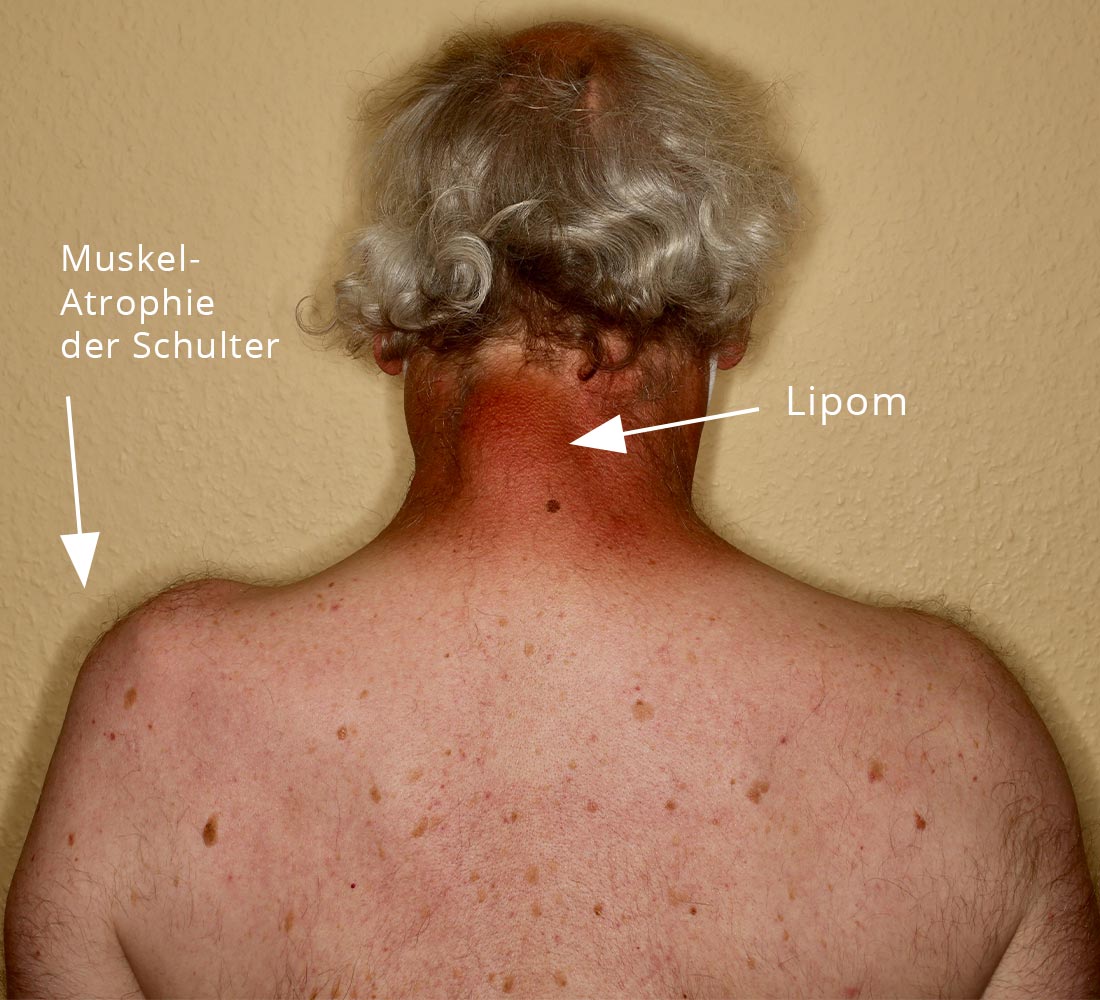
This 58-year-old patient was undergoing treatment for progressive paralysis in his left arm and left shoulder at a neurological and neurosurgical university hospital. They conducted a cervical spine MRI (Photo 3) and planned to perform cervical disc surgery and spinal fusion surgery based on these findings. The lipoma was not seriously considered as the cause of the problem and was disregarded there. The patient declined the spinal surgery and left the hospital on his own responsibility to undergo lipoma removal with us.
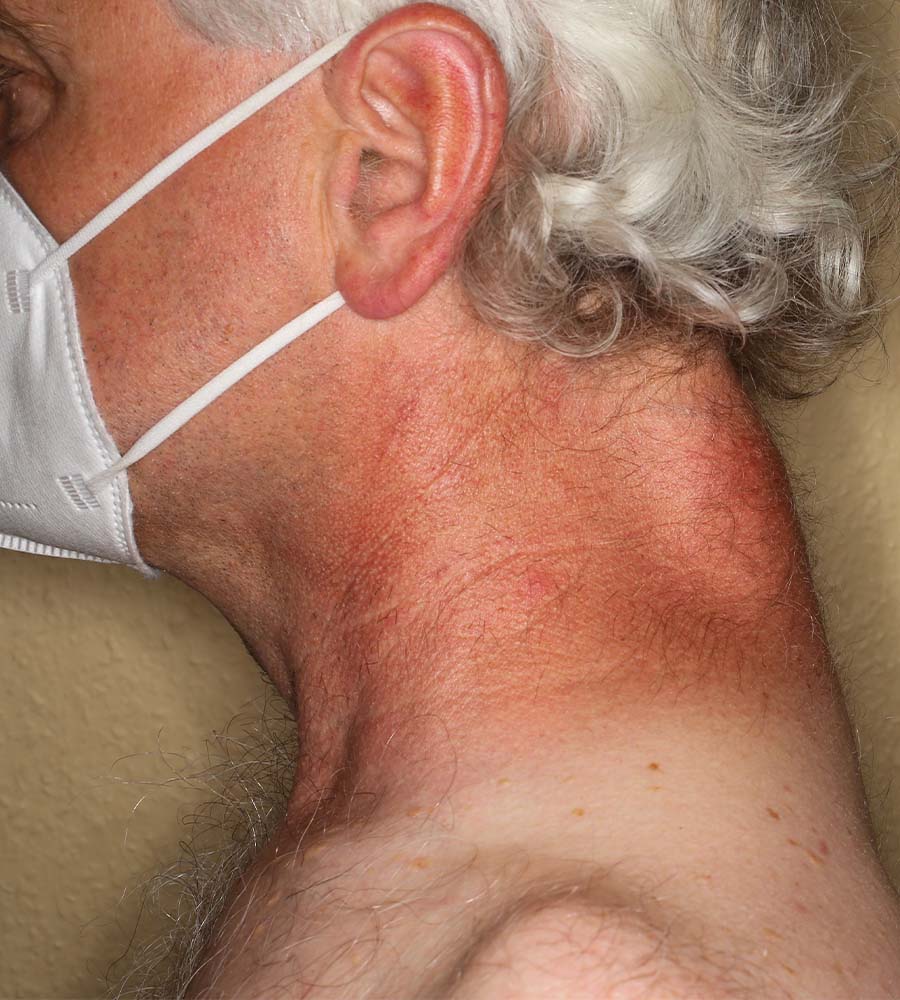
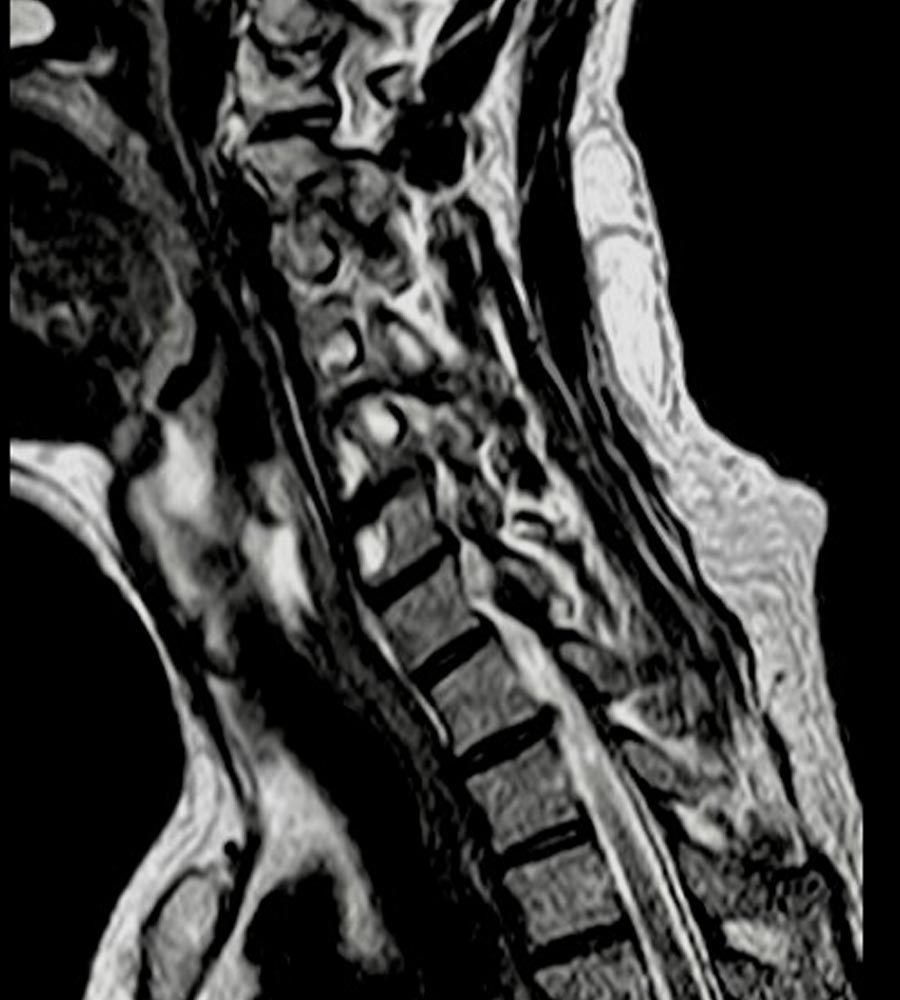
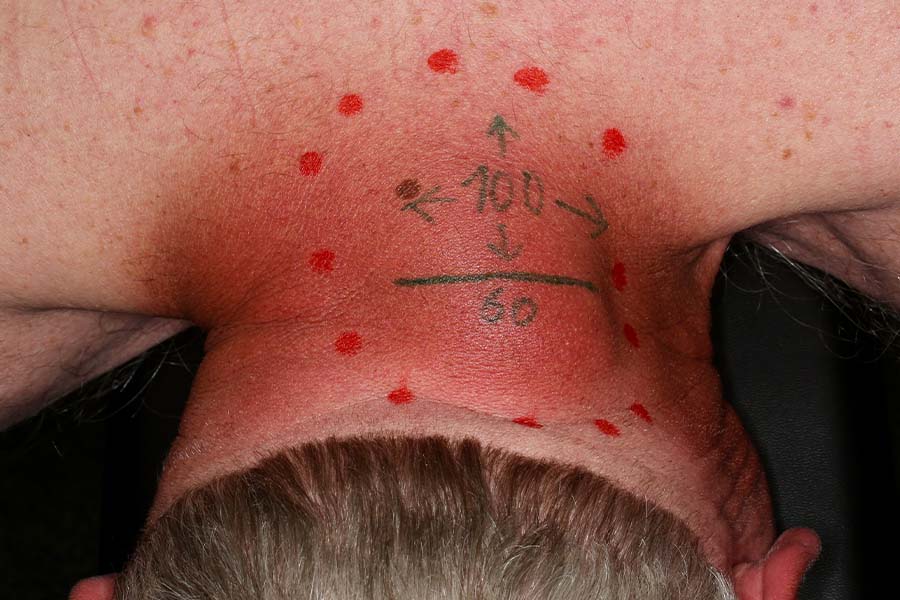
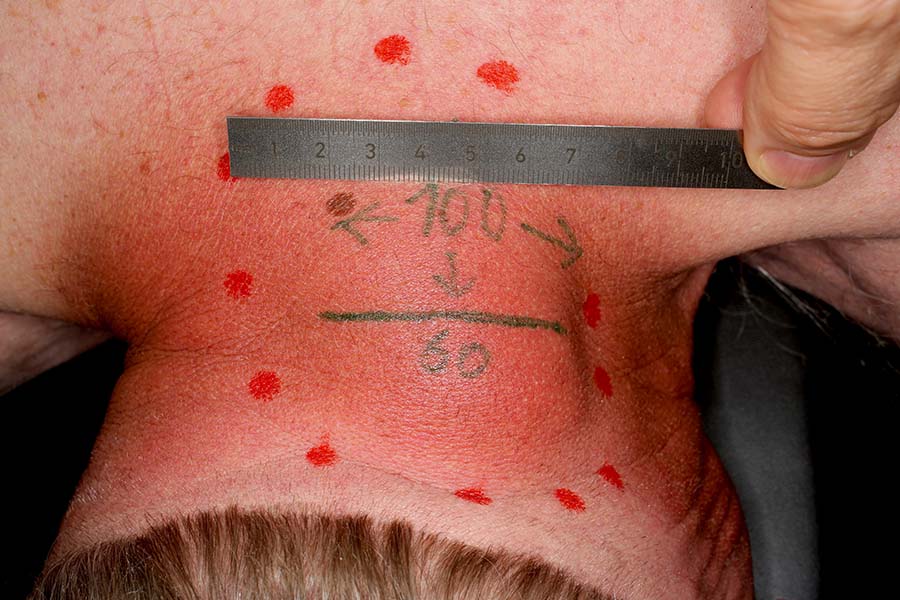
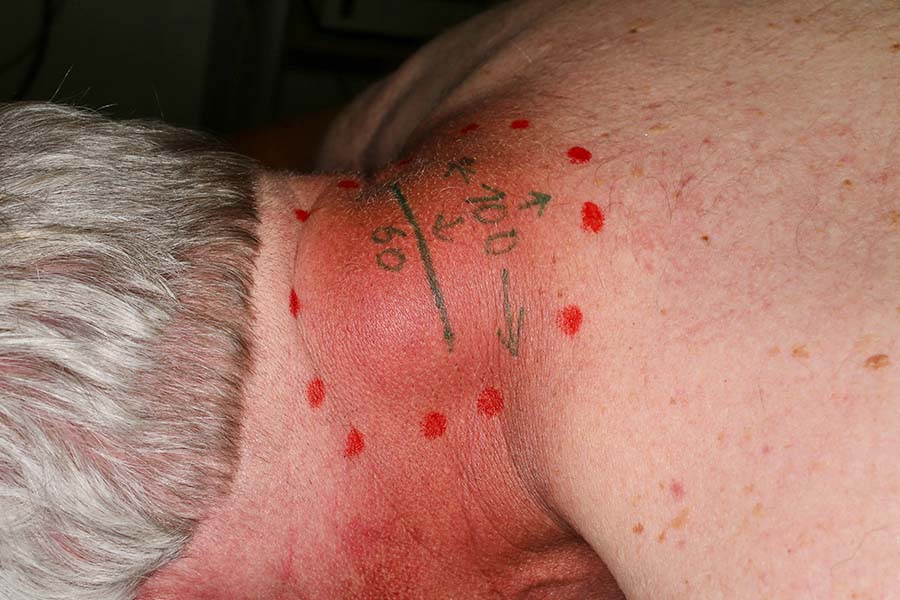
The preoperative planning for the lipoma surgery. The red dashed line marks the palpable boundaries of the lipoma. The green solid line indicates the planned incision path.
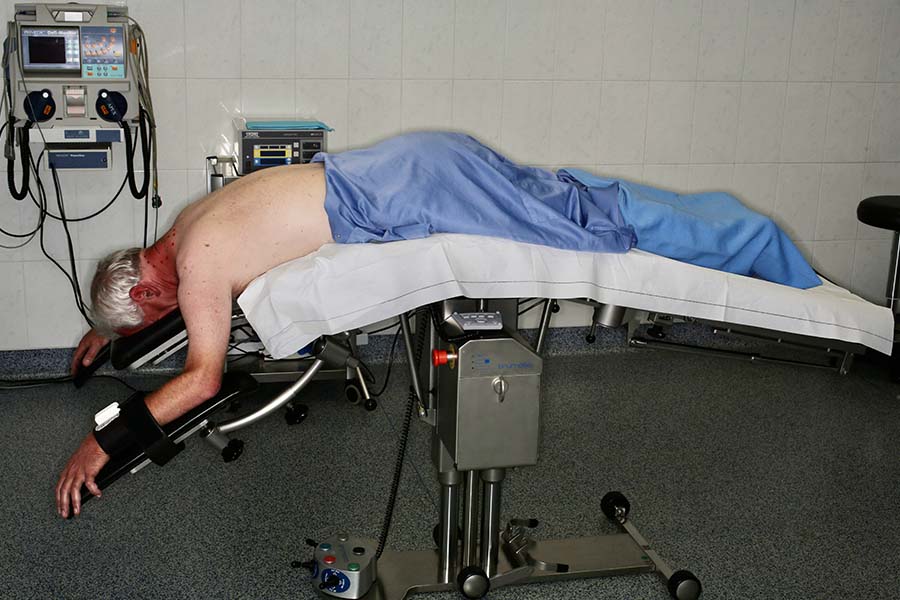
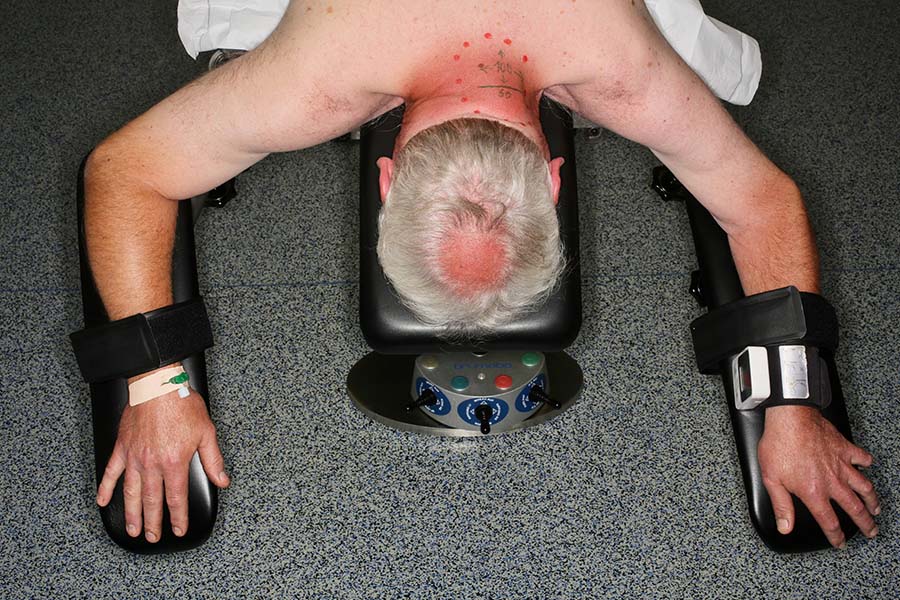
The classic "jackknife position" for surgeries in the back area.
In the jackknife position, the arms are carefully placed on arm supports, and all pressure points are padded. The head is free and the patient can look and breathe through an opening in the headrest of the operating table.
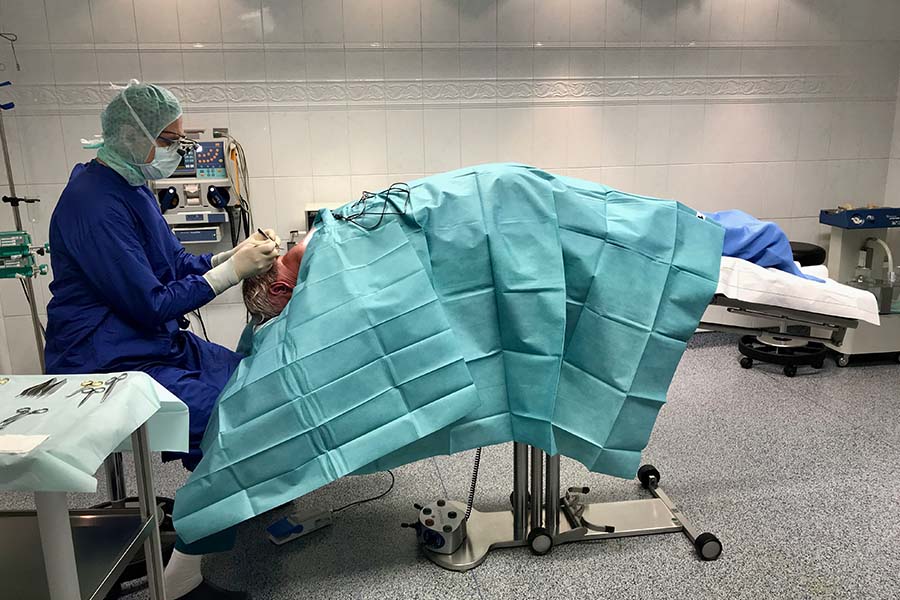
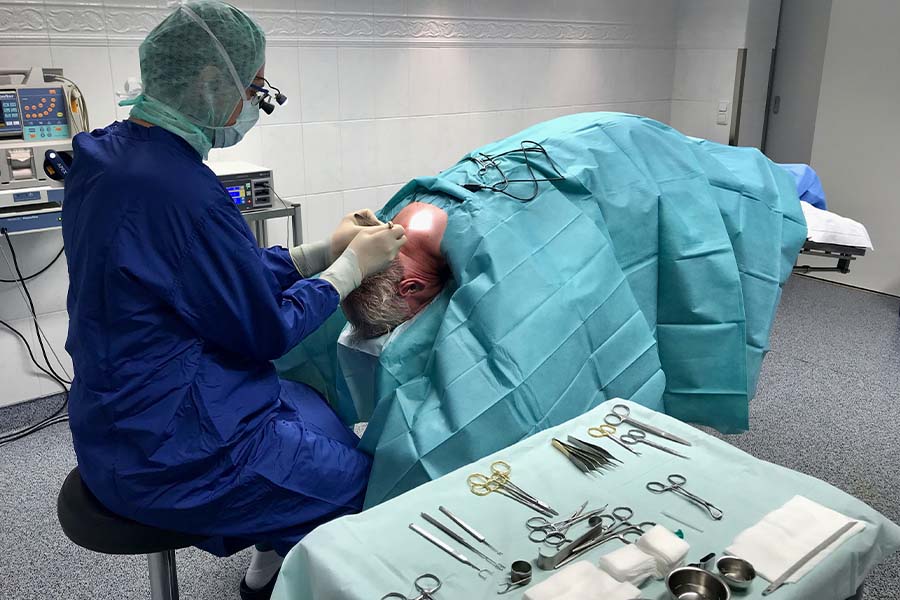
The definitive surgical setup with extensive sterile draping of the surgical area using disposable drapes. The patient's hairy head was completely sterilized. The patient was instructed to have a preoperative short haircut.
OP-PHOTOS
Would you like to see them?
Why do we show you surgical photos?
Many people believe that surgeries are robust, blood-rich, and chaotic.
Not with us!
We operate delicately, gently, with very little blood, and with the best possible overview,
displaying all anatomical structures optimally.
We want to showcase this.
This is our surgical quality.
And this is also the reason why we have an almost "zero" complication rate in surgeries.
We aim to provide the best possible transparency for visitors to our website.
Decide for yourself, whether you would like to see these surgical photos / films.
Go to the surgical photos!
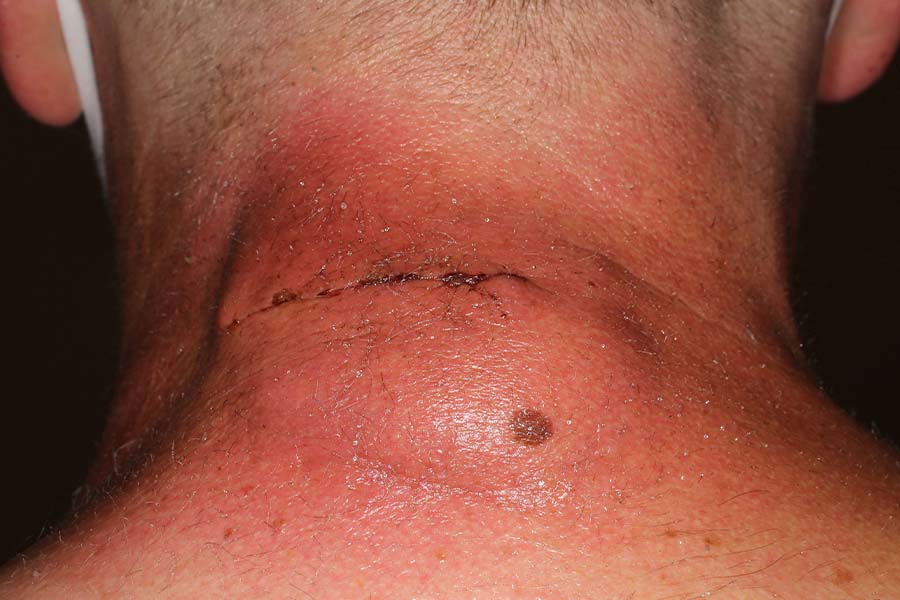
On the 7th postoperative day, a fluctuating hematoma (bruise) had formed, most likely because it is challenging to keep the neck perfectly immobile for days to prevent such bleeding.
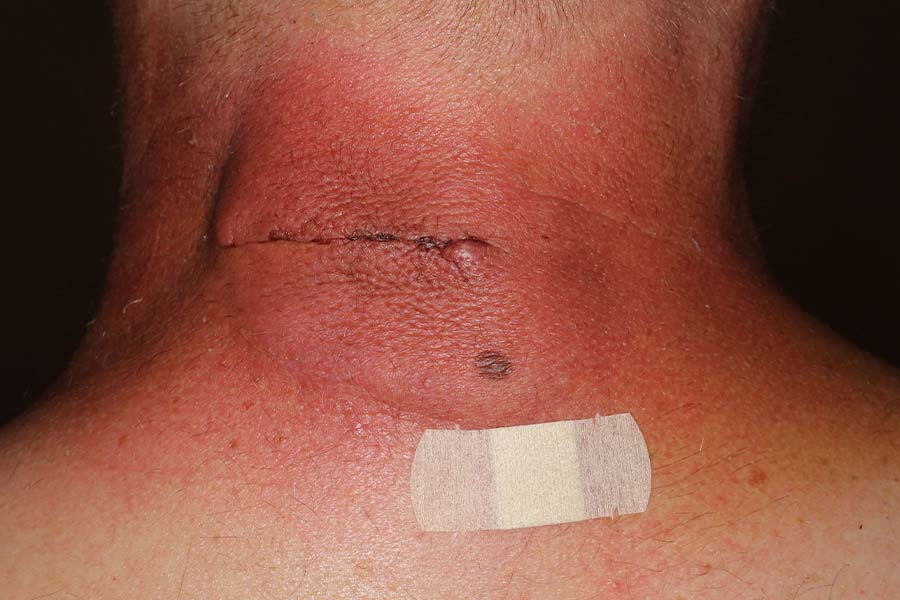
The hematoma had to be sterilely punctured.
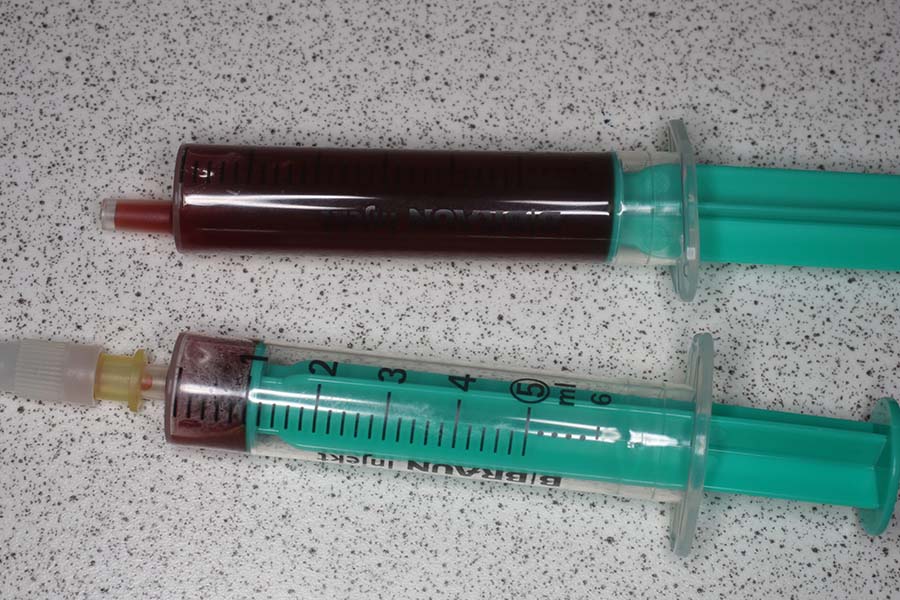
7 ml of dark blood was aspirated.
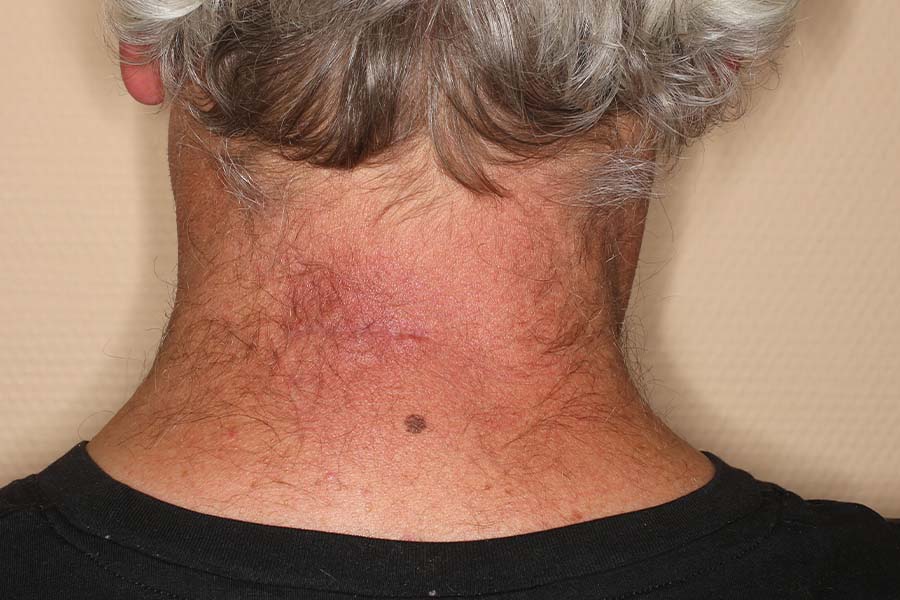
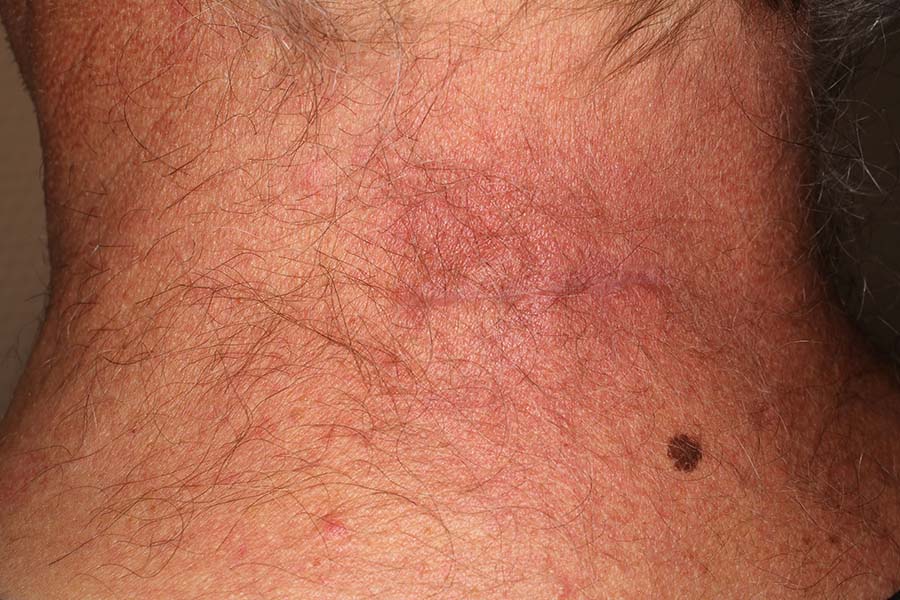
3.5 months post-lipoma removal.
The neck contour is slim and inconspicuous. The scar is hardly noticeable, and the tissue defect is optimally filled thanks to the fat flap plasty. Remarkable: The paralysis symptoms in the left arm regressed relatively quickly, and the arm and shoulder muscles were able to rebuild themselves. Without cervical spine surgery.
Overview of Surgical Therapies for Lipomas by Body Regions
Here you will find an overview by body regions of all the issues and treatment methods related to "Lipomas" described on this website.
Your Appointment in Our Practice
I would be pleased to meet you in my practice for a consultation in Darmstadt-Griesheim. Please book an appointment telephonically. Please mail us for further information under info(at)dr.fenkl.de.
For a personal consultation call the number below at any time between 08:00 – 18:00 from Monday to Thursday
Tel. 0049 6155 - 87 88 84

